As the late ex-Beatle George Harrison wrote, “all things must pass”.
His lyrics resonate with our daily affairs but, of course, apply to the future of our Solar System too.
Gloomy? Possibly.
But while it’s inevitable that all celestial objects will one day ‘pass’, our planetary neighbourhood is evolving, regenerating and recycling over aeons.
How lucky are we, to understand and sometimes witness their passing in all its awesome splendour?
Jupiter's Great Red Spot will disappear

In just a couple of decades, for instance, we could see Jupiter’s legendary Great Red Spot – a high-pressure Earth-sized anticyclone – morph from an oval to a Great Red Circle and possibly even disappear.
Trapped as it is between two opposing jet streams acting like conveyor belts, this spinning wheel has, since perhaps the 17th century, circled the gas giant in a direction opposite to the planet’s eastward rotation.
In the late 19th century, the vortex was roughly four times our planet’s diameter.
It’s now around 1.3 times the width of Earth and recent Hubble images of the Great Red Spot have shown it’s still unstable.
Changing daily, it jiggles like a bowl of gelatine, squeezing in and out, pushing between the jet streams north and south like the filling in an overstuffed sandwich.

As it accelerates and decelerates, it simultaneously grows taller, stretching upward like clay being shaped on a potter’s wheel.
The cause of the oscillations is unknown, but could result from adjusting to internal momentum and outside winds.
Its colour has also deepened to an intense red/orange in the last decade.
A result of high-altitude hydrocarbons and other complex molecules interacting with ultraviolet sunlight, the exact hue dependent on whether fresh clouds are drawn into the tempest.
One thing’s for sure: the Great Red Spot is already offering a spectacular show.
Mars's moon will smash into the planet

Looking further into the future, Mars is also undergoing some changes.
The larger of Mars's two moons, Phobos – orbiting just 6,000km (3,700 miles) above the Martian surface – is in a gravitational death spiral.
Phobos is tumbling towards the Martian surface at a rate of 1.8 metres (6ft) every hundred years.
Tell-tale signs of its eventual demise are already visible in the form of parallel grooves – striations – scarring the moon’s terrain.
Once thought to be ancient scars from asteroid impacts, according to recent modelling they are more like ‘stretch marks’, ever-widening dust-filled canyons resulting from the intense tidal forces between Phobos and its parent planet.
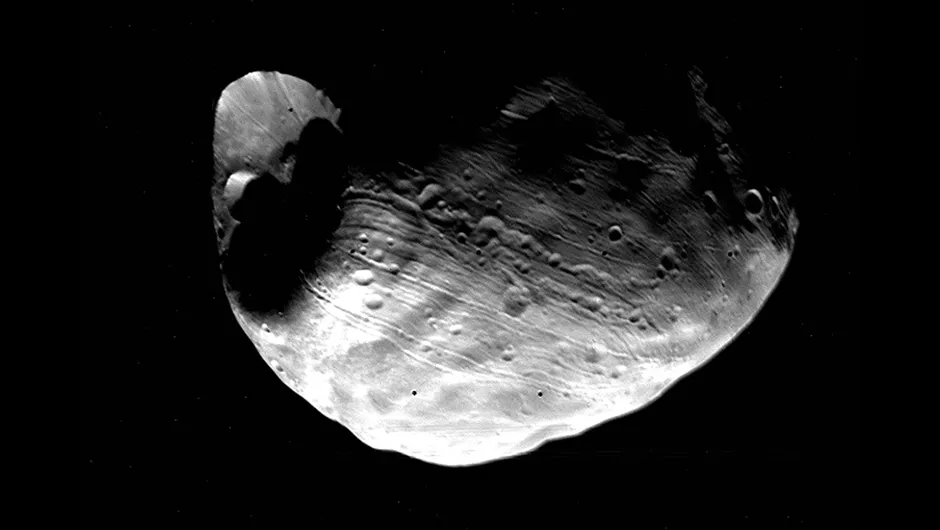
Credit: NASA
The moon’s interior may resemble a weak rubble pile, scarcely held together and encased by a 100-metre-thick (330ft) layer of powdery regolith that distorts and causes the surface to readjust.
It moves like elastic, building stresses which ultimately cause fractures.
The closer Phobos approaches Mars, the greater the tidal forces.
At its current rate, it will complete its suicide spiral and hit Mars within 50 million years.
That is, unless tidal forces tear it apart beforehand, in which case it will form a beautiful diaphanous ring.
Coincidentally, the same fate may also befall Neptune’s moon Triton, which is slowly drifting inward and has a similarly fractured surface.
Saturn's rings will disintegrate
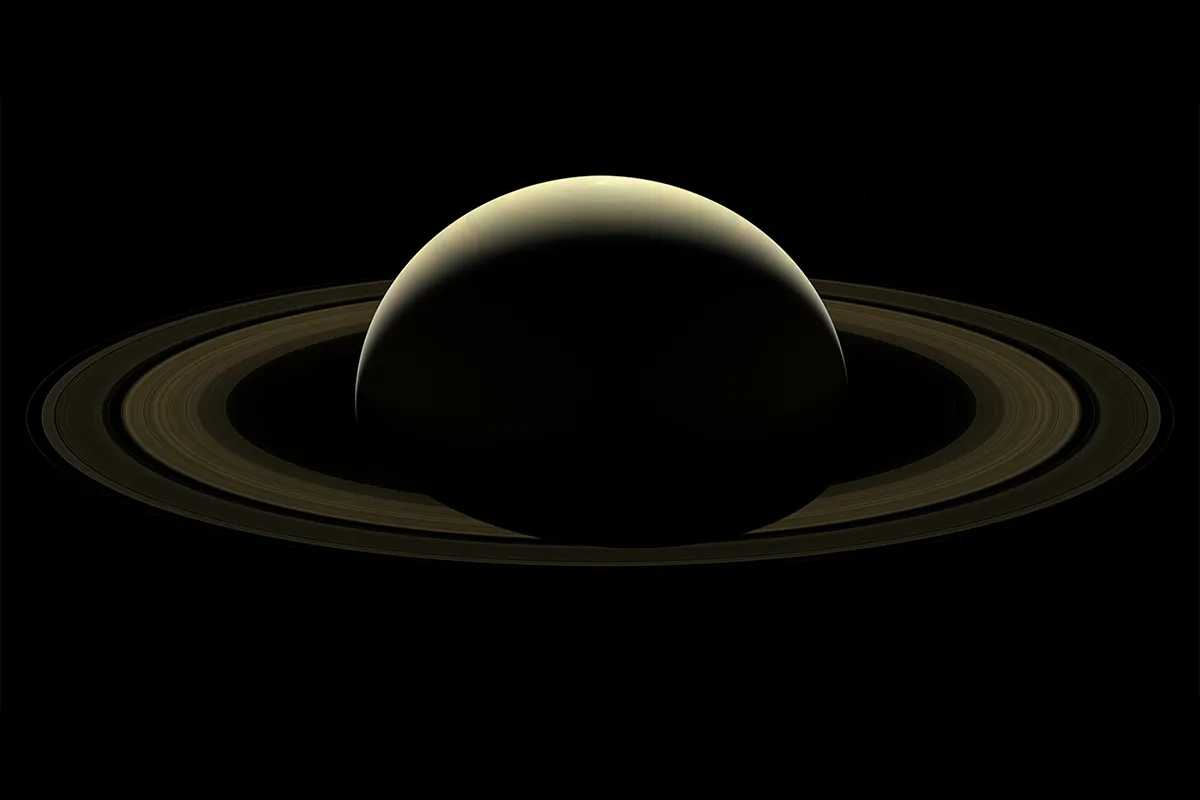
Peering even further ahead in time, it is estimated that, 100 to 300 million years from now, Saturn’s iconic ring system may also disappear due to an erosive process called ‘ring rain’.
Measuring up to 1km (0.6 miles) thick and comprised of billions, if not trillions, of chunks of water ice ranging in size from a grain of sand to a mountain, these gorgeous rings have been admired ever since Galileo turned his telescope in their direction in 1610.
But they’re disintegrating. Every day, an Olympic-sized swimming pool of water rains down from the innermost rings onto the gas giant planet.
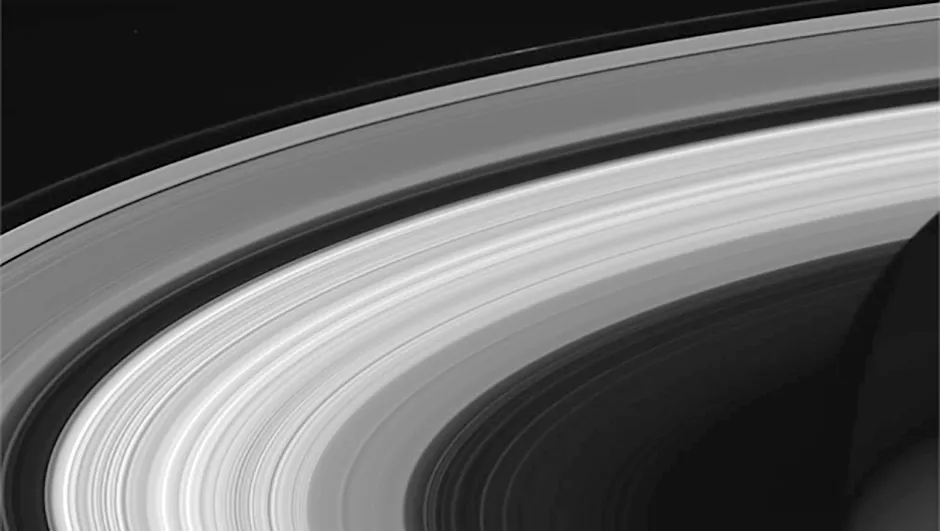
Space rocks and solar radiation constantly agitate the ring particles, creating an electrical charge that binds them to Saturn’s magnetic field lines.
The gas giant’s gravity then lures these icy particles inward where, corralled by magnetic fields, they flow into the planet’s upper atmosphere.
During its 29.5-year orbit, Saturn shifts towards and away from the Sun, its rings doing likewise.
This tilt determines how much radiation hits the innermost rings and how much dusty material rains down.
Scientists suspect that when the rings are edge-on with the Sun the rain slows down, but future studies using the James Webb Space Telescope and the Keck Observatory will better determine just how long the ethereal icy rings will last.
For now, we are just fortunate enough to witness and enjoy their expansive majesty.
Our Moon will drift away

Another departing sight might also be our own Moon, which has been slowly drifting away from us since it formed, probably after a collision with a protoplanet, Theia, 4.5 billion years ago.
When first created, the Moon was 10 times closer, a day lasted less than 10 hours and it was drifting away from Earth at a rate of 20cm (8 inches) per year.
By bouncing lasers off mirrors installed on the lunar surface during the lunar expeditions of the 1960s and 1970s, astronomers can prove this drift is now 3.8cm (1.5 inches) per year and it is influencing the future of our planet.

The Moon’s gravity pulls on Earth’s oceans, creating tides that cause drag and slow its spin rate.
The resulting loss of angular momentum is compensated for by the Moon speeding up and thus drifting further away.
Another reason is tidal locking; the Moon once had its own rotational spin, but Earth also exerted a gravitational pull, dissipating energy and slowing the Moon’s rotation until one lunar rotation equalled one orbit of Earth.
That's why the same side of the Moon always faces Earth. We never see the far side of the Moon from the ground.
That energy dissipation continues.
As the distance increases, the Moon’s pull will lessen and Earth’s tides will become smaller, leading to a loss of coastal ecosystems and a change in ocean currents.
These currents drive and stabilise the weather, meaning the process could cause global climate upheaval.

Equally crucially, the Moon’s gravitational hold also helps stabilise Earth’s tilt toward and away from the Sun – the source of the seasons.
Any change in stability could make seasons obsolete.
Finally, the number and frequency of total solar eclipses will decrease as well.
The Moon and the Sun appear the same size in the sky because the Sun is 400 times larger than our satellite, but is 400 times further away.
Currently an average of 384,400km (238,855 miles) distant, as the Moon continues its drift it will appear smaller and smaller.

In 600 million years, it will be too far away to completely block the Sun, meaning an end to total solar eclipses.
In the meantime, how fortunate we skywatchers are to be around to see such a chance alignment.
Ultimately, indications suggest the Moon will cease receding in around 15 billion years’ time.
But long before that deadline arrives, locked in our planet’s gravitational embrace, both Earth and the Moon will ‘go down together’, engulfed in the death throes of the enormous object anchoring our Solar System – the Sun.
The death of our Sun
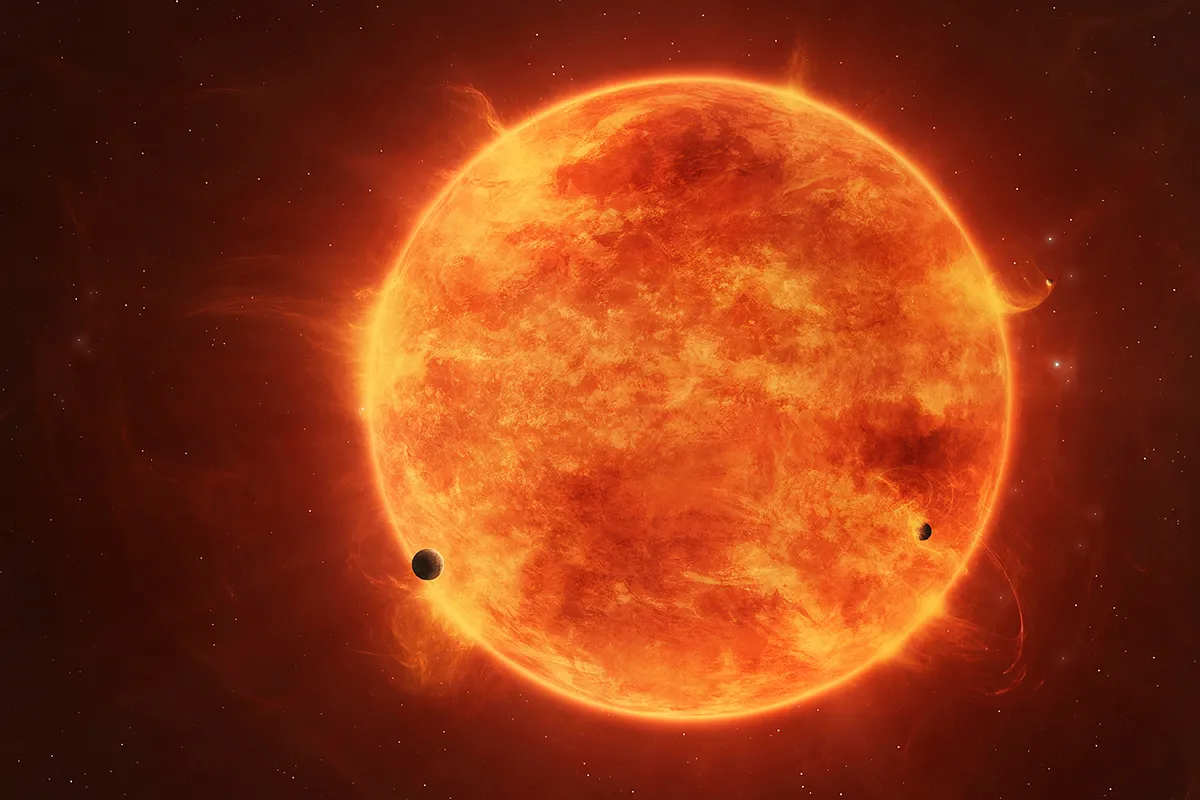
Five billion years from now, the Sun will exhaust its hydrogen fuel, nuclear fusion will slow and it will contract and heat up.
Helium will then start to fuse into heavier elements such as carbon, nitrogen and oxygen.
Hydrogen will also begin burning in the ‘shell’ of material surrounding the core.
The collective prodigious heat will force the Sun’s outer layer of gas to puff up into an enormous red giant star, its immensity filling the entire sky.
Bloated and dying, it will violently eject material in intense episodic bursts, melting, evaporating and devouring the innermost planets Mercury and Venus and threatening Earth.
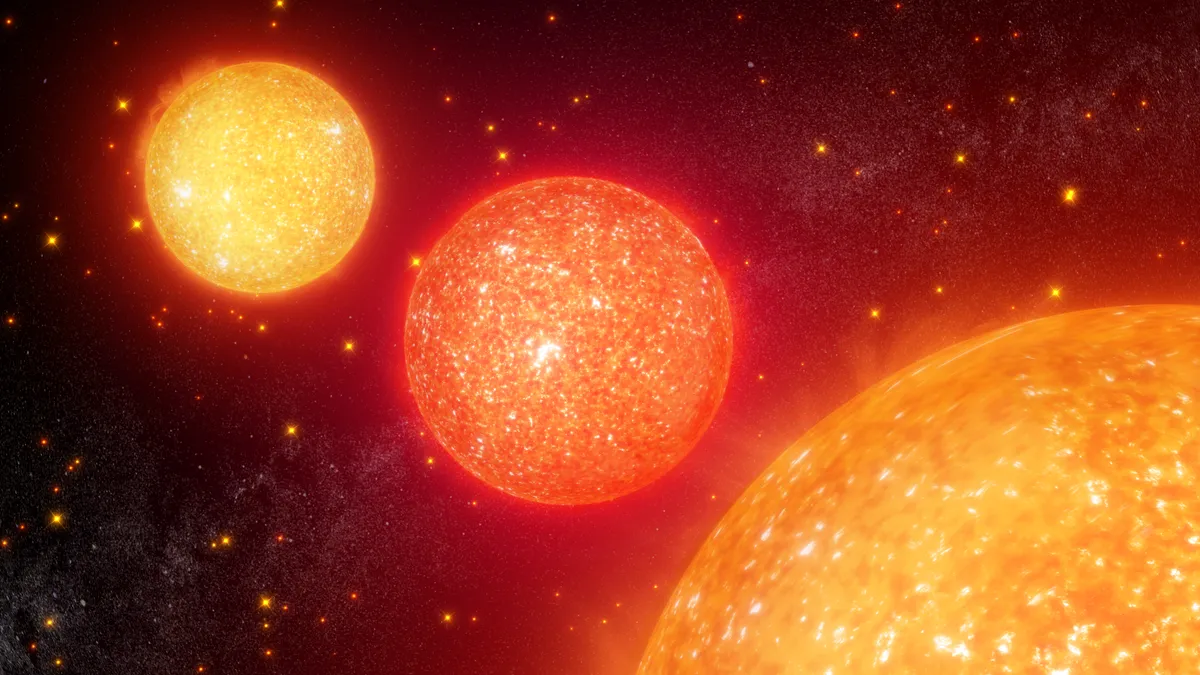
Even if our planet survives, its surface and atmosphere will be fried by intense radiation and become uninhabitable.
The atmospheres of the gas giants Jupiter and Saturn will similarly erode.
As our dying star loses around half its mass, its gravitational hold on the planets in the Solar System will weaken and their orbits will expand.
The outer planets’ orbits will drift outward and settle twice as far away as they are today.
But if we heed the advice of Monty Python’s Eric Idle to “always look on the bright side of life”, we could turn our attention to possibly the Solar System’s sole surviving real estate.
Saturn’s moon, Titan, its dense shrouding atmosphere offering habitability in its oceans of water-ammonia for several hundred million years.
Whatever the truly long-term future holds for our solar neighbourhood, it's sure to be a magnificent journey.
The planets colliding

Astronomers think the Solar System will remain stable for 40 million years but thereafter, with gravitational tugs between the planets nudging them from their orbits, things could go awry, resulting in catastrophic collisions between Mercury, Venus, Earth and Mars.
Due to gravitational pulling from Jupiter, there is a small chance Mercury’s orbit will become seriously elongated within the next 5 billion years.
If Mercury’s eccentricity exceeds 0.6 (0 is a perfect circle while 1 is maximum elongation), it could cross Venus’s orbit, destabilising the entire inner Solar System.
Mercury and Mars, at just 6% and 11% of Earth’s mass respectively, would get tossed around but Venus, with 82% of our planet’s mass, would be harder to shift.
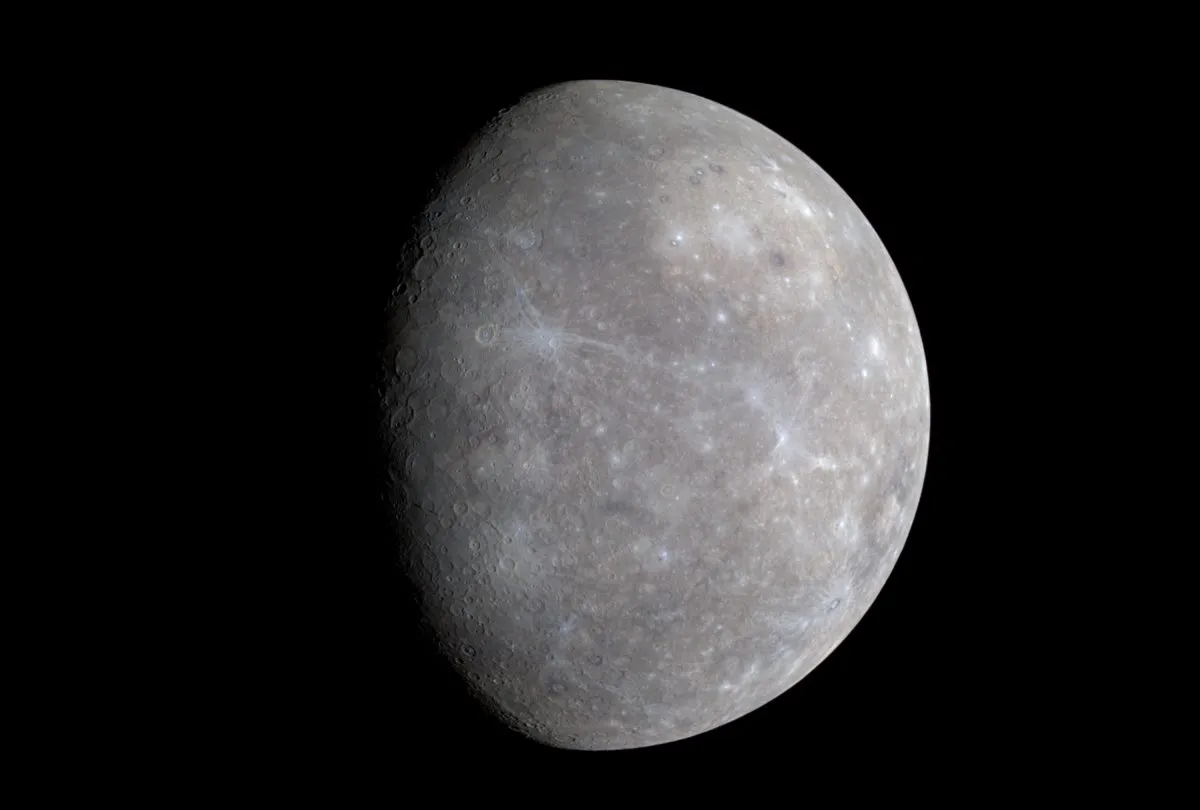
Mars could be flung out of the Solar System entirely after a further 820 million years, with Mercury and Venus colliding some 40 million years later.
If Earth was slammed by a wayward Mercury or Mars, it would, for some 1,000 years, glow at the temperature of a red giant star, its surface smothered by lava.
Simulations even suggest that in 1.3 billion years, Mercury could be tossed into the Sun.
Mercifully, it’s a cosmic billiard game destined for a few billion years hence and would make for a fittingly dramatic end to such a unique planet as our own.
Asteroid impact

Asteroids slamming Earth is not science fiction but science fact.
Variously sized space rocks have constantly swiped our planet, so it’s a case of when not if.
The mountain-sized asteroid that struck just off Mexico’s Yucatán Peninsula 66 million years ago left the approximately 150km-wide (90 mile) by 19km-deep (12 mile) Chicxulub crater and caused the extinction of the dinosaurs. It could happen again.
Even a house-sized rock travelling at 30,000mph would pack the energy equivalent of the Hiroshima bomb and flatten reinforced concrete buildings 8km (5 miles) from ground zero.
A 11–13km-wide (7–8 mile) asteroid walloping the surface would cause monstrous tsunamis, blast water and dust into the atmosphere, block sunlight and ultimately lower global temperatures.
Most life would be extinguished, but it would take a 97km-wide (60-mile) asteroid to wipe out
all life as we know it.
The good news is most rocks miss us.
Moreover, NASA’s Jet Propulsion Laboratory’s Asteroid Watch is on constant lookout for threats.
If there is one, the recent Double Asteroid Redirection Test (DART) on small asteroid Dimorphos proved humans can alter a rock’s trajectory, possibly averting future annihilation.
This article appeared in the March 2025 issue of BBC Sky at Night Magazine
